I built a bike and cycled across Europe on it
During lockdown, I fixed bikes for something to do. I fixed my own bikes, my family’s bikes, friends bikes. Having run out of bikes to fix, I set myself a challenge: I would build a “good” gravel bike for less than £1,000. I bought a frame and wheels from AliExpress, I obsessively checked Ebay for cheap deals on the other bits, Eventually I pulled it all together and build my own bike. Naturally, I loved the bike once I had made it. It was made for an adventure and I had no adventure to go on. So I had to make one up.
I’d always fancied a solo self-supported trip since reading Tim Moore’s very funny books about his adventures riding the Tour and, the Giro routes and, most relevantly, his book “The Cyclist Who Went Out In The Cold” about riding from Finland to the Black Sea on EuroVelo 13 - Iron Curtain Trail. This is a must read for any budding long distance cyclist, although I’m not sure that it will encourage anybody to do a long distance cycling adventure but they will certainly laugh out loud while reading it.
I settled on cycling from my hometown of Cambridge to Moscow. EuroVelo 2 - Capitals Route seemed ideal for this adventure and I obsessively started studying maps and planning the stages. For obvious geopolitical reasons it became clear that last legs through Belarus and Russia had to be abandoned and I lowered my ambition to an approximately 2,000 km ride from Cambridge to Warsaw. This seemed like the sort of thing that a stubborn middle-aged man with no multi-day long distance cycling experience could possibly manage.
Although I cycle a lot, my cycling tends to be focused on nice 50-80k routes in Cambridge and Mallorca on my good road bikes. I didn’t really have any way to…calibrate…what I would be able to do day after day after day. I also had no idea what to take and how to carry it on the bike and how to manage the bike, the routes and, most of all, the distance.
I decided to be simple about it. I wasn’t going to camp – I’m too old for camping and didn’t want to add another 4kgs to my bike. I would book hotels along the way and decide on each day’s route on the evening of the previous day. This is definitely not the cheapest way of doing a long distance cycle but, I didn’t want to make the trip any more physically challenging than it already was. I packed a very minimal amount of stuff into one of those seat post mounted saddle bags that look like a giant black kidney bean. There’s a detailed post about the kit that I took here.
I added an iPad because I wanted to blog about the trip every day. I found that writing the blog every evening while I was stuffing enormous amounts of food into my face was a way of keeping connected to friends and family. When the days were good it was a way of sharing the joy and when the days were bad it was sort of catharsis.

The trip
Sooner than I had expected – or maybe feared – , the day of departure came around and I packed my bike and headed from Cambridge to Harwich where I would join the EuroVelo 2 route. Everything felt pretty good although, when one is used to riding lightweight road bikes, it takes a bit of getting used to riding a fully laden bike. The “bean” on the back did rather wobble about but, as we shall see in due course, that was probably because this particular bean was poorly designed and constructed.
Having reached Harwich, I hung around in the cold waiting for the ferry to load. There is something quite wonderful about cycling a bike up a huge lorry ramp into the car deck of a big ferry and it really felt like the moment of no-return…
The following morning, the ferry docked in Hoek van Holland, I was first off the boat and I joined the EuroVelo 2 route which would, I hoped, lead me all the way to Warsaw. My Garmin announced “Course Found” and the adventure began.

Cycling in the Netherlands is an absolute joy and not only because it is so flat. The cycling infrastructure is outstanding; one almost never spends any time sharing a road with cars and, due to the high population density, there are little towns every ten or twenty kilometres where you can pick up refreshments. There are even windmills!
I was aiming for somewhere around 150 km a day and early in one of these trips, that’s achievable. On the first day I managed 190 km without feeling terribly pressured – although I would suffer a bit the following day.
On the first evening I worked out the routine that stood me in good stead throughout the trip. I would arrive at the hotel and immediately shower and wash the cycling kit. I then worked out where to stay the following night. I would look up that town on booking.com and book a hotel or guesthouse. I’d then get dressed in the unstylish and horrible – but lightweight – off-bike clothes and go and find somewhere to stuff calories into my mouth. In the morning, the routine was to put on damp cycling kit, pack the bag, check the room twice for anything which I might have left behind, eat a huge breakfast, and then start riding.
As I cycled into Germany, I realised that one sometimes has to make adjustments to the official EuroVelo routing. On the stage from Arnhem to Münster, I realised that the EuroVelo 2 route was about 200 km but with some minor adjustments and a little bit of riding on slightly busier roads I could get this down to 150 km. I had a long way to go and so I took the shorter route.
Germany was big and initially very flat. The quality of the farm roads and the EuroVelo 2 routing was superb.
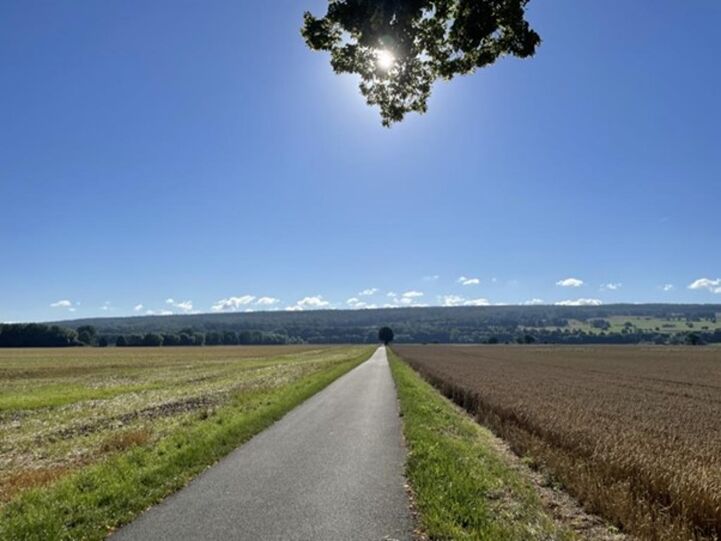
That being said, there are some sections in Germany which definitely aren’t flat...
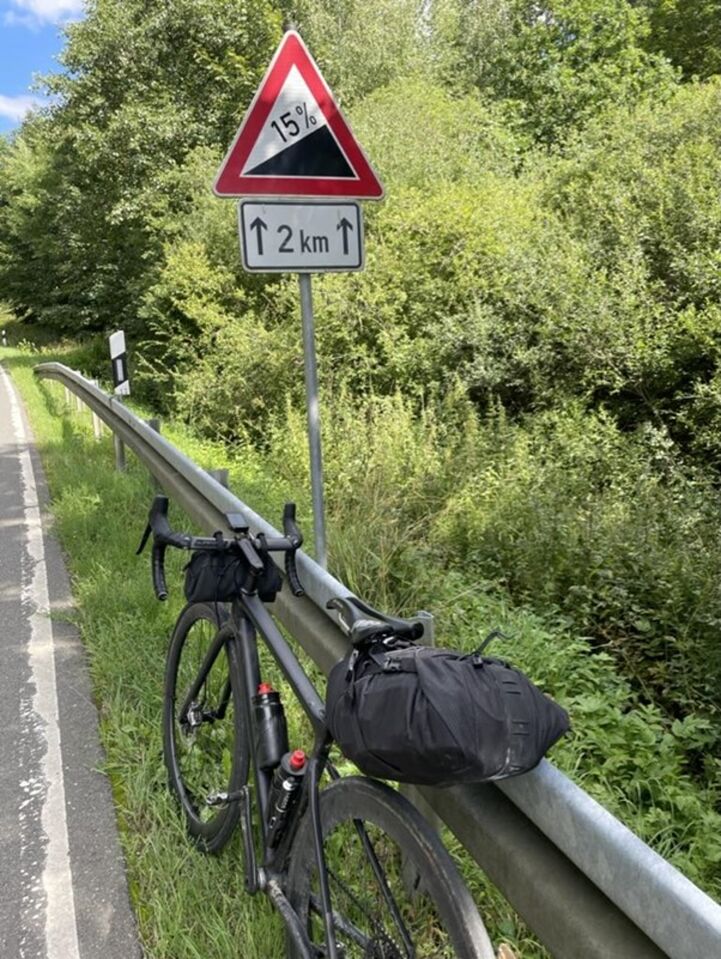
There are also some sections of hills through Germany where the EuroVelo 2 route goes on some fairly sketch gravel paths. I was glad of the wider and slightly knobbly tyres on the bike and I did occasionally say some slightly rude words about the EuroVelo route designers…sorry guys.
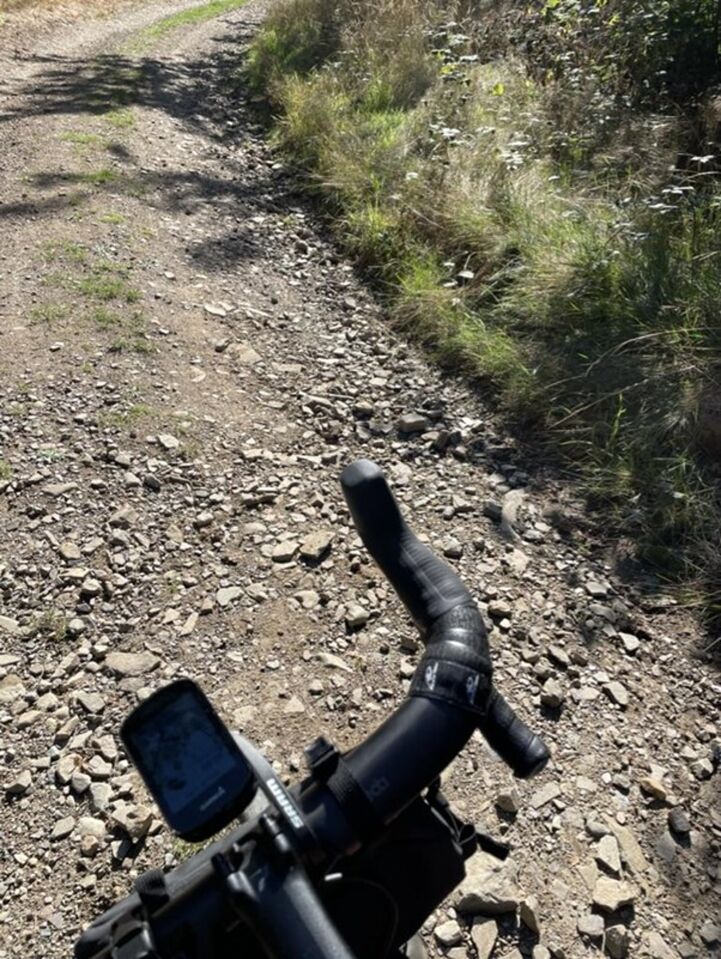
Everybody I met in Germany was friendly and helpful. When I stopped at cafes, random people would chat to me about where I had come from and where I was going. As is the way of cycling, a surprising number of middle-aged men would engage me in conversation about the bike itself.
As the old West Germany turned into what was the old East Germany, the quality of the roads went down a bit and the hotels were a bit worse but it was fascinating to see the new construction springing up around the decaying communist era infrastructure.
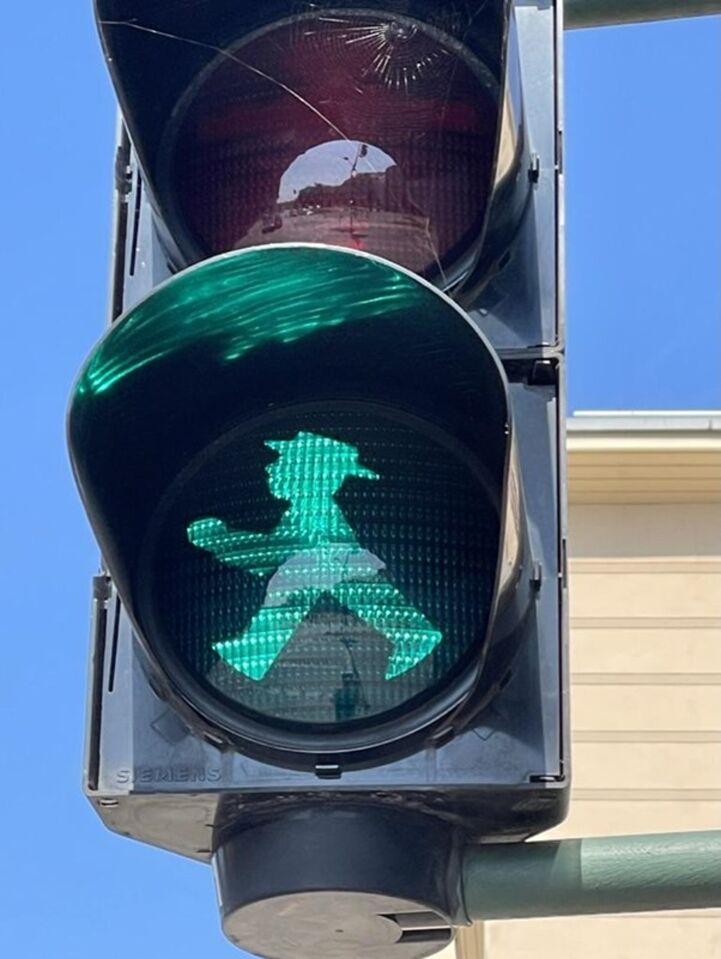
I had decided that over the trip, I would take a couple of rest days and explore some cities which, in the normal course of travel, I might not choose. Whilst it was tempting to have a rest day in Berlin but I actually chose Potsdam and I was glad that I did.
Potsdam was very firmly in the old East Germany and it has some beautiful buildings, great museums and lovely parks. It even has those little green men with hats at pedestrian crossings. These are one of the few remnants of the communist era.
From Potsdam, I cycled through to Berlin and through the middle of the Brandenburger Tor. I could have shortened or at least quickened the route by going round Berlin but the Tor is just such an iconic European monument, it felt appropriate to at least see it.
I crossed into Poland at Frankfurt am Oder. The roads were a little more challenging in Poland but the EuroVelo 2 route planners had done a great job finding quiet – if not exactly direct – routes through the Polish countryside. I stayed in tiny little villages with one hotel and ate hugely calorific Central European food with friendly and delightful people. Every single interaction would start with me saying “Bardzo mi przykro, ale nie mówię po polsku” which Google Translate had helpfully told me was “I am very sorry but don’t speak any Polish” – Google Translate had even helped me with the pronunciation. As soon as I said this to anybody in Poland, there would be a smile – probably my pronunciation was the funny thing – and the recipient would say “But I speak English so we are good!!”.
Some days were wonderful, some days were less good. On one occasion, I had my route planned out and was already riding it when the hotel emailed me to cancel my room. Some frantic rebooking online got me a room but suddenly I had an extra 50 km to cycle that day. That can be dispiriting. However, on a bike, you’re often riding through interesting places and therefore it’s hard to stay grumpy about things for long.
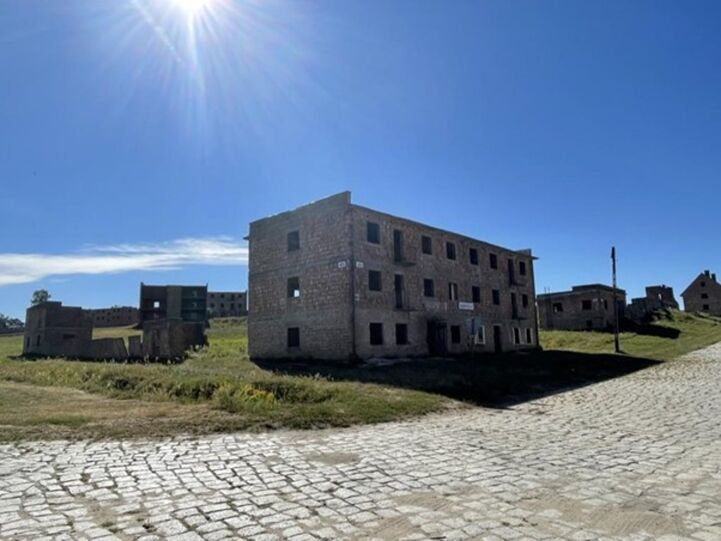
After one unplanned long day of 180 km some of which was on potholed and sandy farm tracks, I decided to have my second rest day in Poznań where I had finished for the day.
Once again, this was a city I wouldn’t normally have visited but it was beautiful despite the whole of the centre of the town being dug up. As a mathematician, I had to go to the Enigma Museum which was superb, I saw the famous fighting clockwork goats on the main square, and, after visiting a bike shop to pick up some chain lube, I even found out that in Polish a bicycle is known as a "rower". Why? Well, if you realise that a "w" is pronounced "v" in Polish, it’s a "rover" and bikes in Poland are named after one of the very first "safety" cycles called "The Rover", manufactured by John Kemp Starley. In the future, The Rover Company would become Rover Cars and finally Jaguar Land Rover. All named after The Rover bicycle.
After my rest day I had three days to Warsaw. Most of the roads were long, straight and flat through the endless plains of Poland.
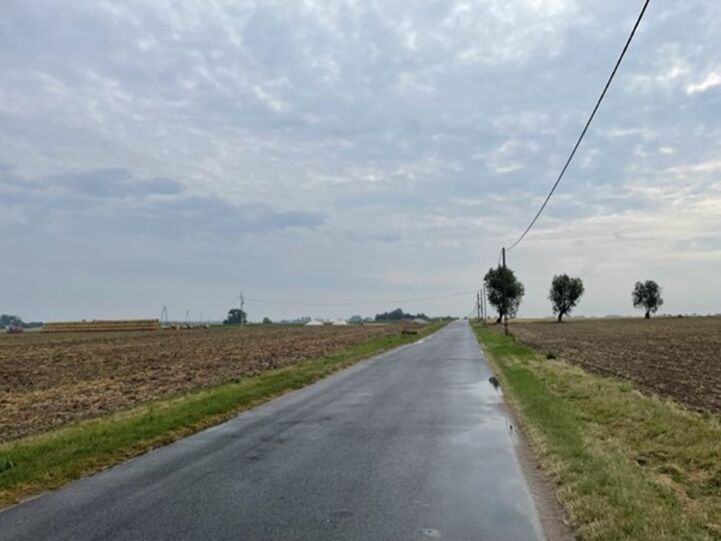
However boring the long straight roads through farmlands were, there were the occasional issues to keep the long-distance cyclist on his toes.

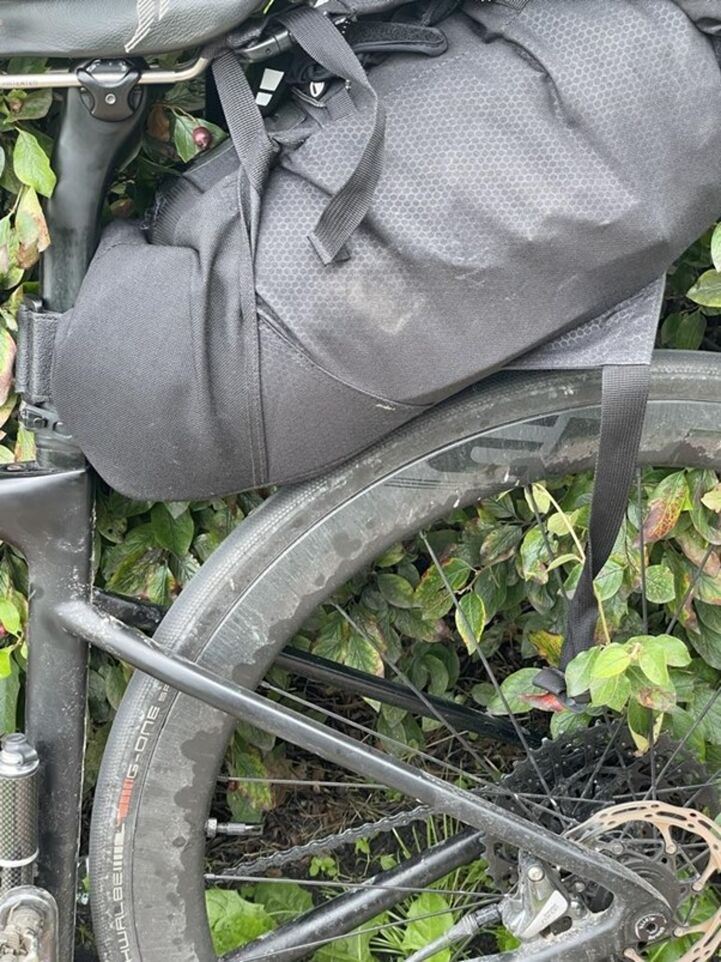
In the final days, there is always a little bit of sadness because you can see the end of the trip and you know it’s going to be over. However, as the adventure draws to a close, more things start to go wrong. I got sand in the gears, I fell off and, very annoyingly, the saddlebag bean broke.
There was a lot of jury rigging that had to be done to get to the end. It is one of the fundamental aspects of solo-self-supported cycling that even a small problem can turn into a bit of a crisis if you haven’t got some mechanical improvisation skills. I managed to fix the broken saddlebag bean with the belt from my off-bike trousers, I fixed the sand in the gears by tearing off leaves from maize plants and using that to clean out the cassette at the back.
And finally… I crossed the city boundary into Warsaw.
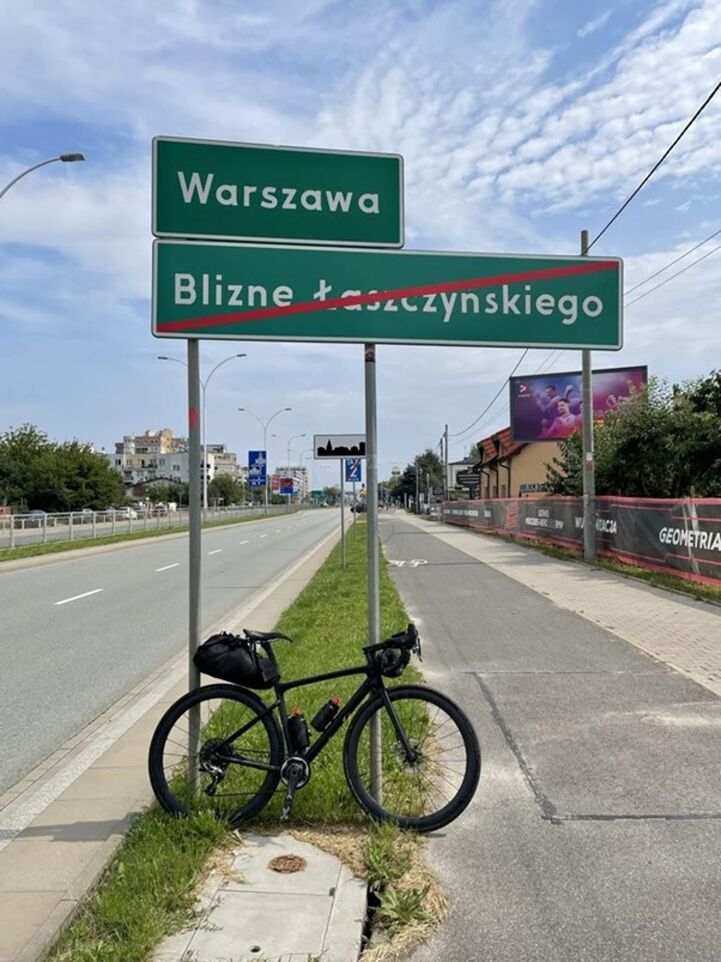
After days and days of cycling through tiny towns on quiet farm roads, dealing with the traffic in a major European capital was a little bit of a shock although not quite as much as cycling straight into the Polish Army brass band.
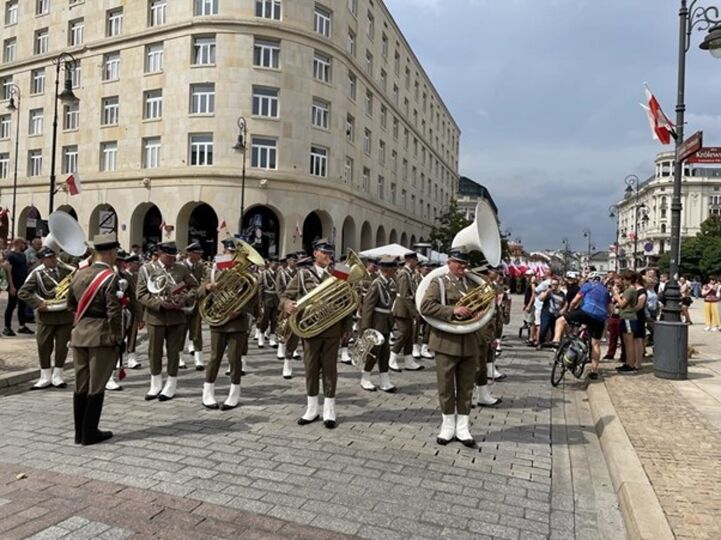
The trip was over. I had sent a bike bag to Warsaw containing some clothes and I was incredibly glad to pack the bike away with the horrible off-bike clothes and my cycling kit and wear clean fresh clothes.
All in all, it was a fantastic experience. If you’re reading this and thinking “could I do that sort of EuroVelo trip”, the answer is “probably”. You certainly don’t need to be Tour de France level fit. A basic level of bike fitness is enough since you’re rolling along at 20km/h for most of the time and that allows you to do 140 to 180 kilometres a day. The harder thing is the mental strength required for a long distance solo cycle.
If you’d like to read more detail about the trip, I have collected all my daily blog posts into one long document. Hopefully it might inspire more people to do long distance cycle trips. The thrill of doing something extraordinary on your own and unsupported is not to be overlooked. The experience and the things that you see along the way make this an unparalleled way of travelling. There is a great aphorism which states that “the things worth doing are on the edge of failure”. When you spend 14 days alone and on the edge of failure, the achievement is indescribably sweet.
Author and pictures: Ewan Kirk